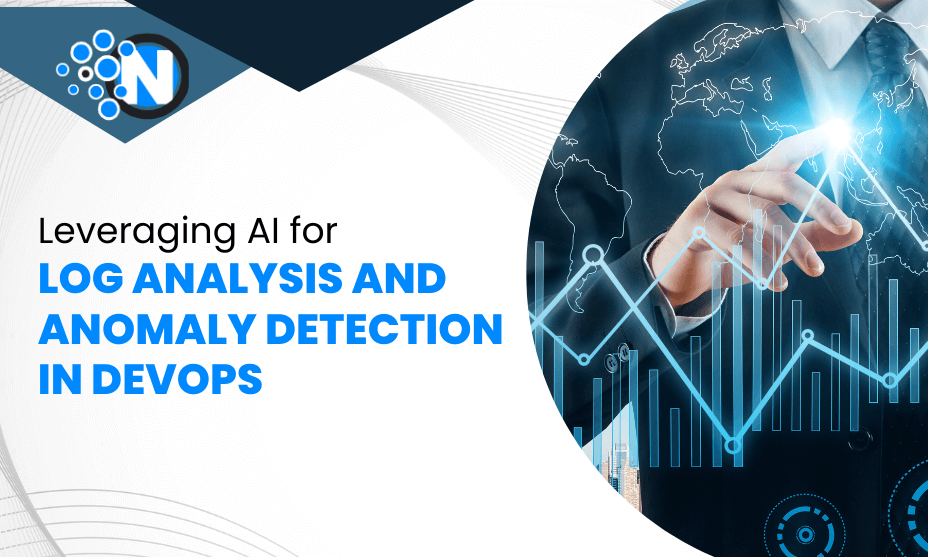
Are you feeling overwhelmed by the ever-increasing flood of log data from your organization’s software systems? Struggling to spot those crucial insights, like sneaky anomalies or pesky errors, before they wreak havoc on your business’s performance? Well, fear not.
DevOps teams all around the globe are grappling with the same challenges. But guess what? There’s a solution that can help you make sense of this ginormous log data deluge: the power of artificial intelligence (AI) for log analysis and anomaly detection. It’s like having a super-smart sidekick to navigate through the chaos and save the day. With the help of AI, integrating security practices into a DevSecOps workflow, like in this JFrog guide, has become more manageable and more efficient.
Understanding the Basics of Log Analysis and Anomaly Detection
Log analysis serves as a vital pillar in modern technology operations, involving the scrutiny of log files that encapsulate essential insights about system activities, errors, and interactions. These records not only aid in diagnosing issues and optimizing performance but also play a pivotal role in bolstering security by uncovering potential breaches.
Anomaly detection complements log analysis by automatically pinpointing deviations from expected behavior within these log files. Through techniques such as statistical analysis and machine learning, anomaly detection provides early warnings, enabling proactive management to prevent system disruptions and enhance cybersecurity. Together, log analysis and anomaly detection form a dynamic duo in the realm of DevOps, empowering organizations to maintain resilient and secure IT environments while delivering seamless user experiences in the ever-evolving technology landscape.
Read Also: DevOps – Its Role in the Modern Software Development
Advantages of Leveraging AI for Log Analysis and Anomaly Detection in DevOps
Certainly, here are some of the advantages of leveraging AI for log analysis and anomaly detection in DevOps:
Efficient Data Processing: AI algorithms can handle massive volumes of log data efficiently, processing and analyzing it much faster than human analysts. This speed is crucial in identifying anomalies promptly and maintaining system health.
Real-time Monitoring: AI-driven systems can provide real-time monitoring of log data. This enables DevOps teams to detect anomalies and potential issues as they occur, allowing for swift response and resolution.
Early Anomaly Detection: AI can identify subtle patterns and anomalies that might go unnoticed by human analysts. This early detection helps prevent potential problems from escalating, reducing downtime and minimizing the impact on users.
Predictive Insights: AI models learn from historical data, enabling them to predict future anomalies and issues. This predictive capability allows DevOps teams to take preventive measures and allocate resources more effectively.
Reduced Human Error: Traditional manual log analysis is prone to human error. AI-powered systems minimize this risk by providing accurate and consistent analysis, leading to more reliable results.

Common Log Data Sources
To start leveraging AI for log analysis and anomaly detection, you need to know what types of log data sources your team needs to review. Here are some common log data sources worth noting:
- Application logs: Generated by applications running on your system, these logs include information about things like errors, transactions, and performance.
- System logs: These logs are generated by operating systems and include information about things like hardware, software, and network issues.
- Infrastructure logs: These logs are generated by infrastructure components such as load balancers, firewalls, and routers. They contain information about network traffic, configuration changes, and system-level issues.
- Security logs: These logs are generated by security tools such as vulnerability scanners, intrusion detection systems, and firewalls. They contain information about security-related events such as attempted exploits, user behavior, and security policy violations.
Defining Parameters for Anomaly Detection Algorithms
Once you’ve identified your log data sources, defining parameters for the anomaly detection algorithms is important. There are several parameters to consider when setting up your anomaly detection algorithms, including:
- Thresholds: The minimum number of standard deviations from normal behavior required to trigger an alert.
- Rate of change: The percentage change from normal behavior required to trigger an alert.
- Correlations: Patterns that suggest that multiple events are related and should be considered together in an anomaly detection algorithm.
- Context: Understanding of the system under analysis and the events that can be considered normal.
- Exploring the Different Types of AI-based Tools Available for DevOps
- Several AI-based tools are available to help teams streamline their DevOps workflows, including:
- Machine learning-based log analysis platforms: These platforms utilize machine learning algorithms to detect anomalies automatically and identify problems in large volumes of logs.
- Application performance management (APM) tools: APM tools help teams monitor the performance of their applications in real time. AI-powered anomaly detection algorithms can help identify issues faster and more accurately than manual analysis.
- Cloud-based tools: Cloud-based anomaly detection tools run on cloud platforms, making it easy to scale as your system evolves. These tools compile data from multiple sources, including logs, infrastructure, and applications, to detect issues before they become significant problems.
Utilizing AI Tools to Streamline DevOps Workflows
Leveraging AI for log analysis and anomaly detection in DevOps can help teams quickly identify issues, improve efficiency, and reduce maintenance costs. AI-based tools can also be used to streamline DevOps workflows by automating processes such as:
- Log collection and storage: AI-powered tools can collect, store, and analyze logs from multiple sources in real-time, allowing teams to identify issues quickly.
- Incident response: AI-based tools can help prioritize incident responses and automate the process of assigning tasks to team members.
- Deployment tracking: AI-powered tools can track deployments and detect any potential bottlenecks or errors before they become major problems.
Ethical Considerations in AI-Powered DevOps
As AI takes a more significant role in DevOps, ethical considerations become paramount. Transparency, accountability, and bias mitigation are essential to ensure that AI-driven decisions align with organizational values and user expectations.
Future Prospects and Trends
The future of AI in log analysis and anomaly detection holds great promise. Continued advancements in machine learning and NLP will enable more accurate predictions and deeper insights. As AI matures, it will become an integral part of every DevOps workflow.
Conclusion
Leveraging AI for log analysis and anomaly detection empowers DevOps teams to manage system health and performance proactively. By automating the analysis of vast log data, AI-driven solutions enhance efficiency, reduce downtime, and contribute to a seamless user experience.



